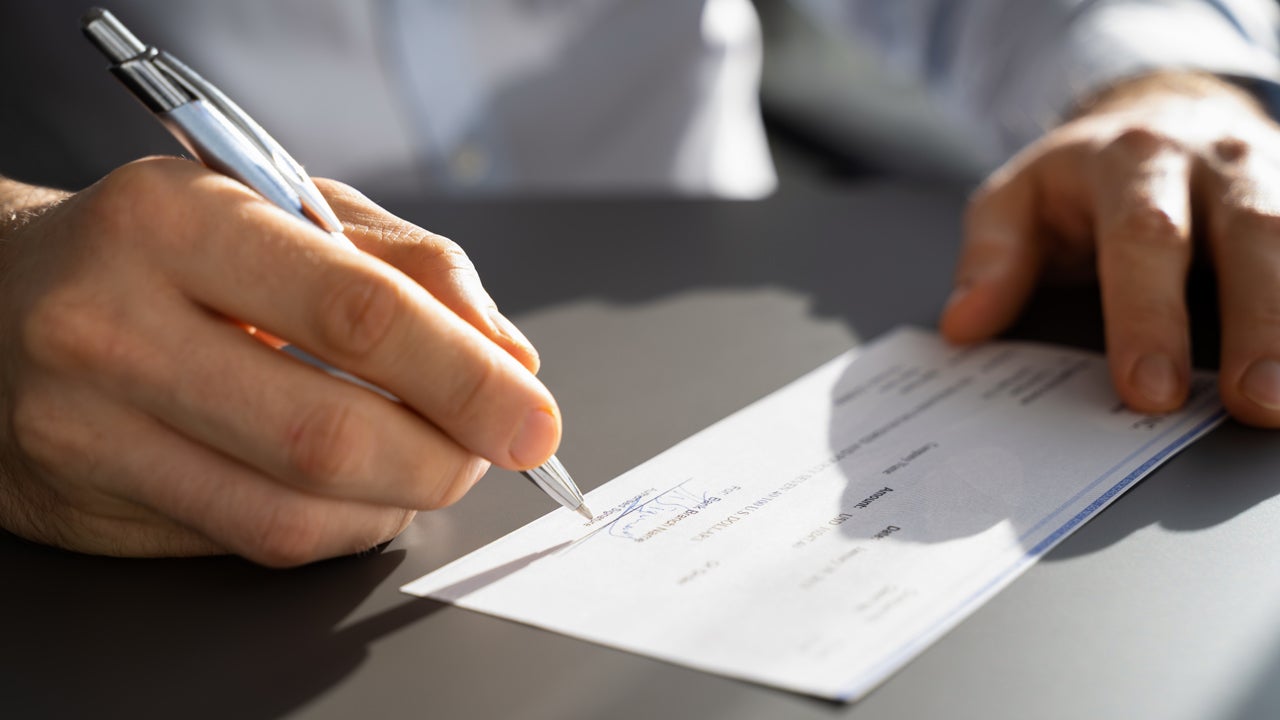Key takeaways
- While digital payments are common, there are times when writing a check is the best, or only, option.
- Fill out checks clearly and carefully. Mistakes can delay payments or cause the check to be rejected.
These days, it’s easy to swipe a card or send money electronically. But checks are still used in plenty of situations. Whether you’re paying rent, sending a gift or handling a bill, knowing how to write a check properly matters. If you make a mistake, you might have to start over — or worse, deal with delays and late fees.
Before you fill out your next check, use this simple step-by-step guide to make sure you get it right the first time.
How to fill out a check
Before writing a check, you’ll need to have a checking account with sufficient funds to cover the amount of the check. Then, follow these steps to fill one out.
1. Date the check
Write the current date on the line at the top right-hand corner. This information notifies the financial institution and the recipient of when it was written. The date can be written in long form or all numbers. For example, either 1/11/2025 or Jan. 11, 2025, could work.
2. Write the name of the payee
On the line that says “Pay to the order of,” write the name of the individual or company you’d like to pay, known as the payee. Be sure to use the payee’s full name instead of a nickname. If you don’t know the exact name, you could write “cash” here. But note that when a check is made out to cash, anyone can cash or deposit it.
3. Write the check amount in numeric form
There are two places on a check for stating the amount you’re paying. The first is a small box to the right of the line for the recipient’s name. Write the numerical dollar amount in this box. For example, you’ll write $100.30 if you wish to write a check for one hundred dollars and thirty cents. Make sure you write this clearly so that the bank can subtract the correct amount from your account.
4. Write the check amount in words
On the line below “Pay to the order of,” write out the dollar amount in words, making sure it matches the numerical amount. Add the cent amount over 100. For example, if you wrote $100.30 in the box, you’ll write “One hundred and 30/100.” If the check is for $100 or another round number, still include 00/100 after the dollar amount for clarity.
5. Write a memo
The memo section of the check is optional, but it’s a good idea to fill it out because it can serve as a reminder of the check’s purpose. If you’re writing the check to pay for a haircut, for example, you can write “Haircut.” A company may ask you to write your account number or invoice number in this section, which helps ensure the payment is applied to the correct account. You would also write your account number in the memo area if the check is for a bill payment.
6. Sign the check
Sign your name on the line at the check’s bottom right-hand corner. Use care to sign legibly, and use the same signature on file at your bank. A signature confirms to the bank that you agree to pay the stated amount to the payee.
Now, your check should be all set to make a payment!
Where to get checks
You can buy checks from your bank or third-party printers. Unless your account comes with free checks, you might find it’s cheaper to order checks from a third-party company.
Additional tips for writing a check
When writing a check, these tips can help ensure your payment is processed without issue.
- Always use a blue or black pen instead of a pencil when filling out a check to avoid alterations.
- Write legibly to prevent any confusion.
- Double-check the details on the check to ensure accuracy.
- Keep track of check numbers and maintain records of checks paid. That way, you’ll have a record of the payment if there are any questions about whether a certain expense was paid or how much you spent.
How to balance your checkbook
Balancing your checkbook means keeping track of your spending and making sure it matches your bank records. Start by recording every transaction — deposits, checks written, ATM withdrawals and debit card purchases — in your check register or a tracking app. Then, compare your records to your monthly bank statement, checking for any discrepancies like missed transactions or bank fees. Subtract any pending payments and add any deposits not yet processed to get your true balance.
FAQs about checks
Read the full article here
















